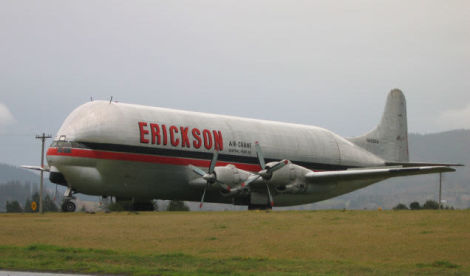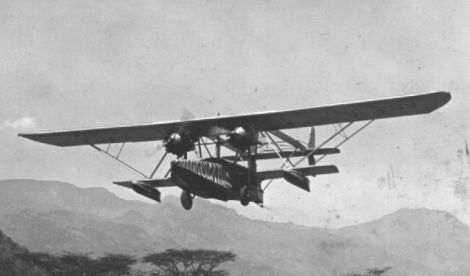Welcome to This Date in Aviation History, getting of you caught up on milestones, important historical events and people in aviation from May 23 through May 26.
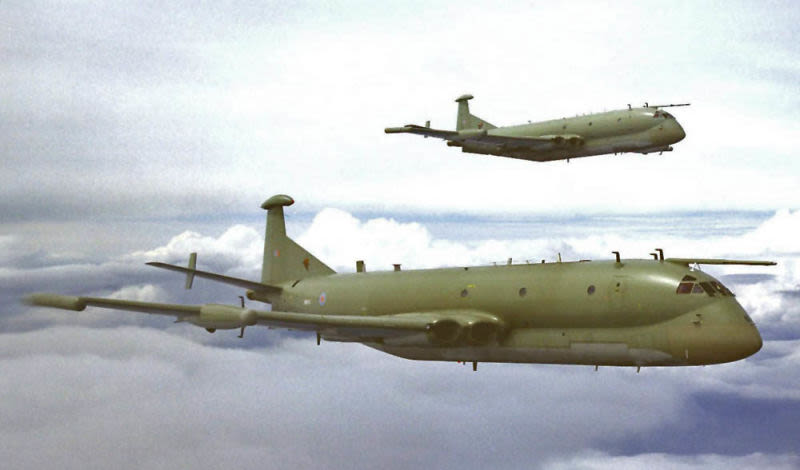
May 23, 1967 – The first flight of the Hawker Siddeley Nimrod. The de Havilland company changed the aviation world forever with the introduction of de Havilland Comet, the world’s first operational jet airliner, although the innovative aircraft had a somewhat checkered history. After entering service in 1952, the airliner was plagued by a series of unexplained hull failures which resulted in fatal crashes, and the airliner was grounded for a time until the cause could be determined and rectified. De Havilland ultimately discovered that the problem was a structural weakness at the corners of the square windows, and the redesigned Comet went on to a useful though somewhat brief career, only to be overshadowed by the arrival of the swept-wing Boeing 707. But the story of the Comet didn’t end with its retirement from commercial service.
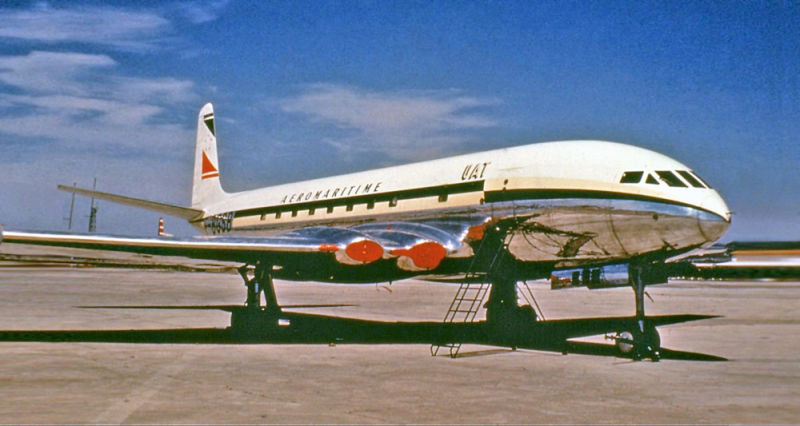
On June 4, 1964, the British Government issued Air Staff Requirement 381 to find a successor to the piston-powered Avro Shackleton, a four-engine maritime patrol aircraft developed from the Avro Lincoln bomber. Corrosion from salt air and metal fatigue were beginning to take their toll, and the Shackleton was due for retirement. A number of aircraft companies responded to the request, including Lockheed with their turboprop-powered P-3 Orion, the similarly powered Breguet Atlantic, as well as variants of the turbojet-powered Hawker Siddeley Trident, BAC One-Eleven and Vickers VC-10 airliners. But Hawker Siddeley, who had acquired de Havilland in 1960, offered a version of the Comet, which, like the Shackleton, was nearing the end of its service life. British Prime Minister Harold Wilson announced the decision to adopt the maritime patrol version of the Comet, dubbed the HS.801 by de Havilland, and the first two prototypes were converted from Comet 4 airframes that had not yet been completed as airliners.
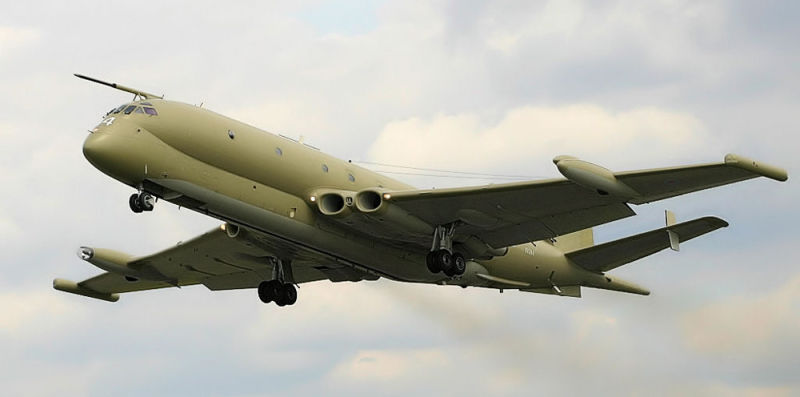
But taking a commercial airliner off the shelf and making a long-range maritime and antisubmarine warfare (ASW) platform took a significant amount of conversion, and the Nimrod ended up looking quite different from its Comet ancestor. The fuselage was enlarged by the addition of a second tube on top, giving it a “double bubble” cross section. The nose was extended to house powerful radars, the tail was modified to hold electronic warfare sensors, and a magnetic anomaly detector (MAD) boom was installed on the tail to detect submerged submarines. The Comet’s Rolls-Royce Avon turbojets were replaced by four Rolls-Royce Spey turbofans which offered better fuel efficiency and longer range. To further extend the Nimrod’s range during particularly long missions, one or two of the engines could be shut down in flight to save fuel. After these conversions were complete, the Nimrod entered production and was introduced into RAF service in October 1969.
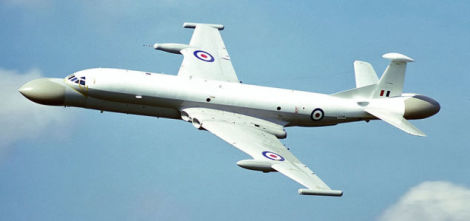
The initial model, the MR1, was soon developed into two subsequent variants. The R1 was a signals intelligence aircraft whose mission was to intercept communications and other electronic signals. Three Nimrods were converted to this specification and went into service in 1974, replacing older Comet C2s and English Electric Canberras. The MR2 was a significant upgrade to the original R1, with modern avionics and more powerful radars. Following the Falklands War in 1982, the MR2 was updated with aerial refueling capability, as well as the ability to carry AIM-9 Sidewinder missiles for self defense. Nimrods were deployed in support of the Gulf War in 1990, and again during the wars in Iraq and Afghanistan. But, like its Shackleton predecessor, the ravages of age began to catch up to the Nimrod, and work began on a significantly modernized, and essentially all new replacement. But the Nimrod MRA4 suffered from serious delays and cost overruns, and the project was eventually abandoned in 2010. The RAF decided instead to procure the Boeing E-3 Sentry for the signal intelligence mission, and the Boeing P-8 Poseidon for the maritime patrol and ASW missions. In all, a total of 51 Nimrods were built, and they were officially retired in 2011.
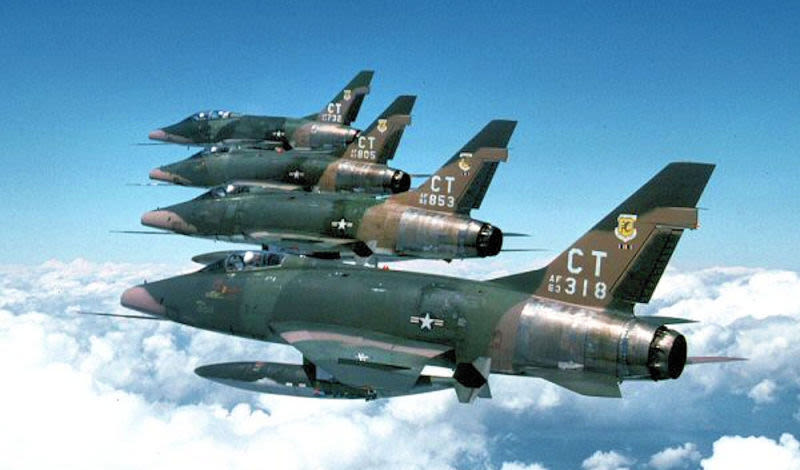
May 25, 1953 – The first flight of the North American F-100 Super Sabre. The 1950s was an extraordinary period for fighter aircraft development. The piston engine of WWII had largely given way to the new turbojet engine, and straight wings had transitioned to swept wings that offered higher speeds and reduced drag. But perhaps more than anything, the 1950s was an era notable for the quest for ever greater speeds. Fighters had already broken the sound barrier in short bursts, but the US Air Force was looking for a fighter that could fly at sustained supersonic speeds. North American had built a solid reputation for itself in WWII with the remarkable P-51 Mustang, and they followed up the success of the Mustang with the swept-wing F-86 Sabre, which proved its mettle in the skies over Korea during the Korean War and found a place in the pantheon of the great warplanes. For their next world-beater, North American turned to the F-86 as a basis for the design of an even more powerful fighter.
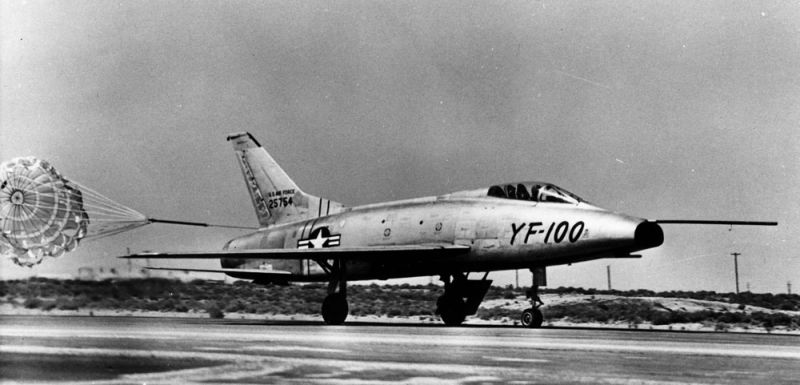
Work on the F-100 began in 1951 with a company-funded aircraft called the Sabre 45, a designation that came from the aircraft’s 45-degree wing sweep (the F-86 employed 35 degrees of sweep). Though much more powerful and more streamlined, the F-100 still shared its predecessor’s nose air intake and single engine, though the Super Sabre used a General Electric J57 engine which delivered nearly twice the power than the F-86's J47. The Super Sabre also made far more use of titanium in its construction, a metal known for both lightness and strength. The first prototype Super Sabre reached Mach 1.07 on its first flight, even though it was fitted with a purposefully de-rated engine. Due to delays in production of the Republic F-84F Thunderstreak, the Air Force accepted the Super Sabre immediately in 1953, and delivery to Air Force squadrons began in 1954.
However, the Super Sabre began to show worrying handling characteristics, and a series of crashes caused the fleet to be grounded in November 1954. Flight tests showed that, during roll maneuvers, the F-100 had a nasty inclination to pitch up and down, and the highly-swept wings made the Super Sabre susceptible to pitch up at low speeds, something that pilots referred to as the “Sabre dance.” Engineers corrected these problems by enlarging the vertical stabilizer by 27-percent, while also increasing the wingspan by 26 inches.
With the control problems solved, deliveries of the Super Sabre restarted and existing aircraft were returned to flying status. But even as the redesigned F-100A began returning to duty, the Air Force began phasing the “Hun” out of service, and it was officially removed from active service by 1961. But that wasn’t the end of the Super Sabre. With Cold War tensions rising in Eastern Europe, the F-100 returned to active duty while North American worked to develop a fighter-bomber version, which became the F-100C. This variant had a still more powerful engine and was developed for nuclear toss bombing.
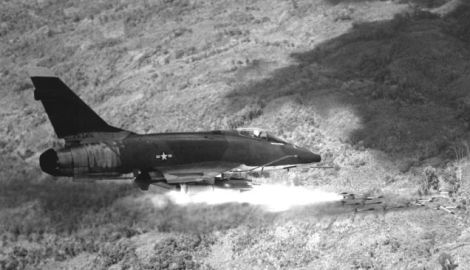
But it was the F-100D that served in the greatest numbers and with the greatest effect. The Super Sabre went to war in Vietnam in 1961 and served for 10 years, becoming the longest serving fighter bomber of the conflict. At the end of the war, Huns had fired over four million rounds of 20mm ammunition, dropped 30 million pounds of bombs, and delivered over 10 million pounds of napalm. Two-seat F-100F Super Sabres served as forward air controllers, flew reconnaissance missions, and carried out search and rescue missions. In a testament to its incredible speed, the Super Sabre set numerous speed records and won the Bendix Trophy in 1955. It was also the first jet fighter to fly over the North Pole, and was flown by the USAF Thunderbirds from 1956 to 1968. Just under 2,300 Super Sabres were produced, and it was retired from frontline service in 1979, though it continued serving with Air National Guard units until 1988.
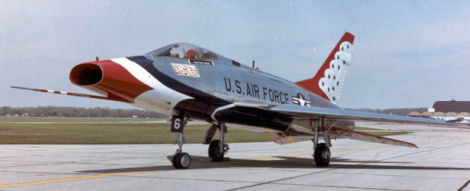
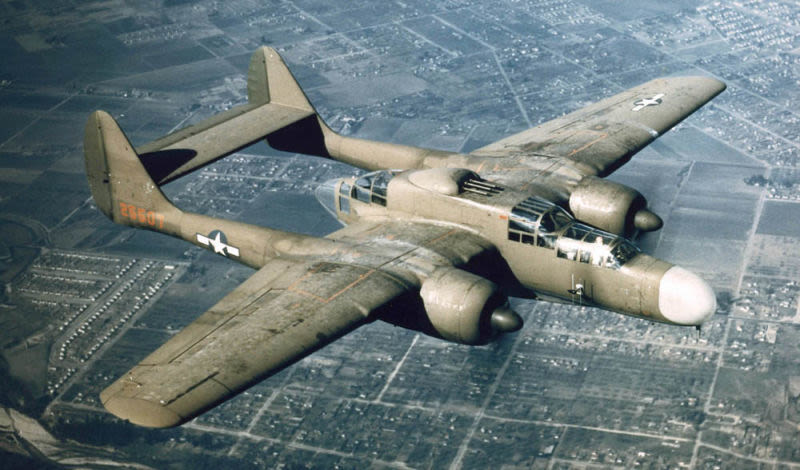
May 26, 1942 – The first flight of the Northrop XP-61 Black Widow. In modern times, it’s difficult or even impossible to imagine a fighter without a radar. Powerful modern radars have made possible fighters that can fly in all weather conditions, day or night, and attack enemy targets that are beyond the pilot’s range of sight. But during WWII, the roles of day fighter and night fighter were, for the most part, separate. Smaller, more agile fighters fought by day, while larger aircraft capable of carrying the early heavy radar sets fought by night. British development of radar (an acronym coined by the United States Navy for “radio detection and ranging”) had been progressing steadily since the early days of the war, and land-based radar stations proved vital during the Battle of Britain in detecting incoming German bombers and directing RAF fighters to intercept them. By late summer of 1940, the British finally developed an airborne radar unit, called the Airborne Intercept (AI) radar, but they didn’t have an aircraft that could carry it.
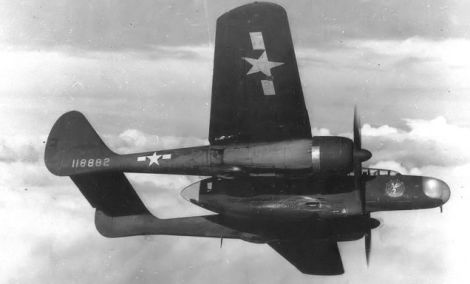
While work on the airborne radar was progressing in England, the British Tizard Mission came to the US to receive assistance in developing new technologies away from the danger of German bombing, and they brought their AI radar with them. With the exchange of technologies, the US saw the potential for making their own night fighter, and the Army made a formal request for such an aircraft. With the head start Northrop had from working on the British proposal, the new XP-61 beat out the only competitor for the contract, the Douglas XA-26A, a night-fighter based on the Douglas A-26 Invader.
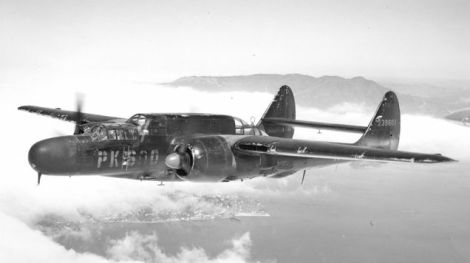
The RAF requested aircraft designs for an aircraft to carry the radar from every Allied manufacturer, including Northrop. Jack Northrop understood that any aircraft capable of the speed, altitude, range and firepower that the RAF required, along with the ability to carry the heavy radar, needed to be big and would need more than one engine. Northrop’s design placed a large gondola between twin booms that each housed an 18-cylinder Pratt & Whitney R-2800 Double Wasp radial engine. The gondola housed two machine gun turrets, one in the nose and one in the rear, each with four guns. Eventually, the rear turret was replaced with a powered turret on the top of the fuselage, though buffeting from the turret eventually led to its removal all together. Northrop then finalized the design by placing four 20mm cannons in the belly of the aircraft, making the Black Widow one of the few American aircraft to mount four cannons.
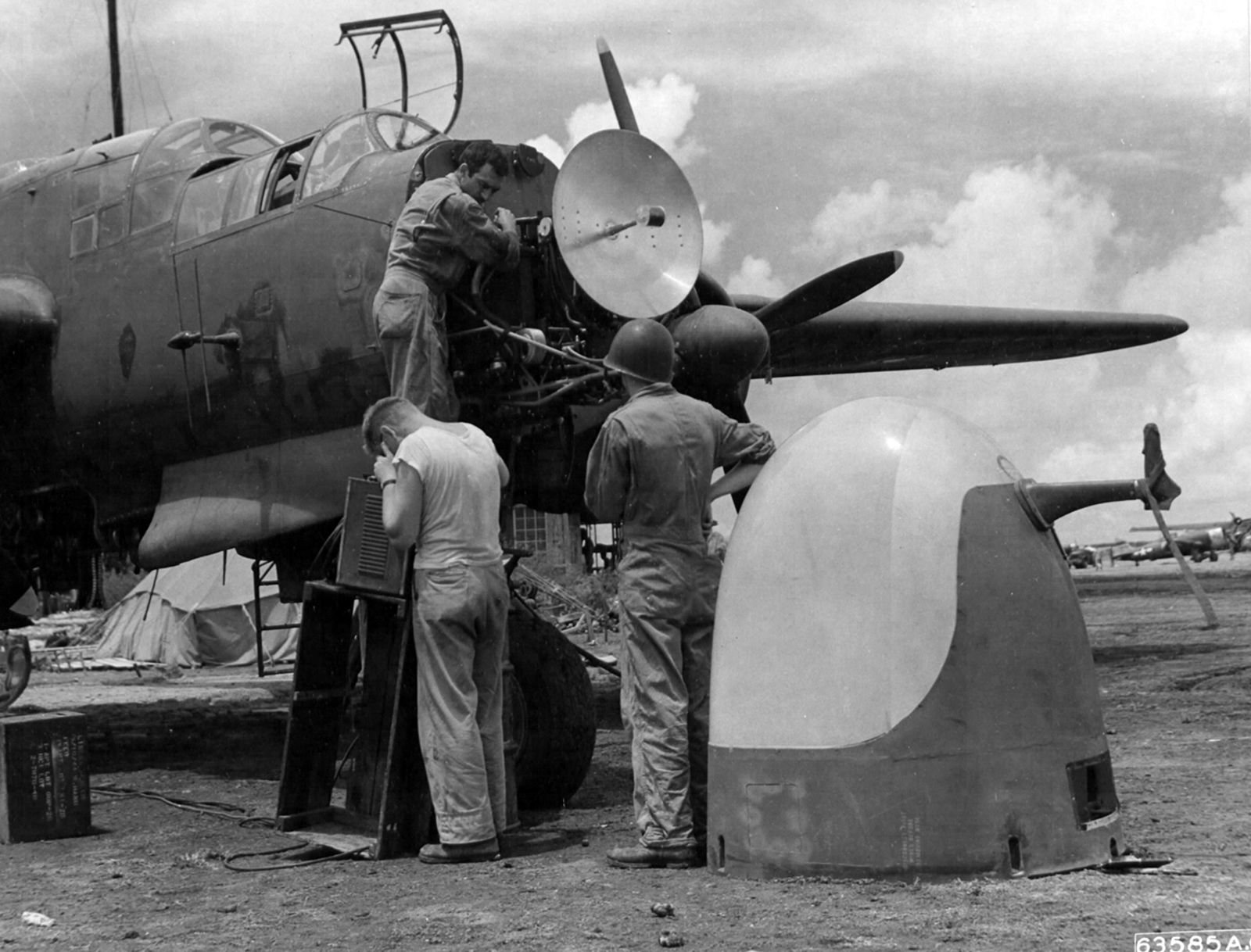
Though history notes the Black Widow as America’s first dedicated night fighter, it was difficult, by the standards of contemporary fighter design, to call the Black Widow a fighter. It was a true behemoth, with a wingspan of 60 feet (8 feet longer than the Lockheed P-38 Lightning), a height of nearly 15 feet, and an empty weight of over 23,000 pounds. When Black Widows arrived in Europe in the spring of 1944, Army commanders were convinced that the P-61 was too slow and cumbersome to counter German aircraft. Instead, they wanted to procure the British de Havilland Mosquito, and even went so far as to organize a competition between the two aircraft. However, with a few tweaks to the engine to improve performance, the Black Widow was able to outperform the Mossie in speed and rate of climb, and with its special “Zap Flaps” and retractable spoilers, the P-61 could even outmaneuver the Mosquito.
Though it was still unable to outduel German single-engine fighters, the Black Widow proved quite effective against German bombers and fighter-bombers. P-61 squadrons even claimed a number of German V-1 flying bombs. In the Pacific, the Black Widow arrived too late to have a significant impact on the war, but it did play a vital role in the rescue of over 500 Allied prisoners from the Cabanatuan prison camp in the Philippines. Though it never fired a shot, a lone P-61 performed aerobatics over the camp to distract Japanese guards while Army Rangers positioned themselves for an assault. A Black Widow is also unofficially credited with scoring the last aerial victory of WWII.
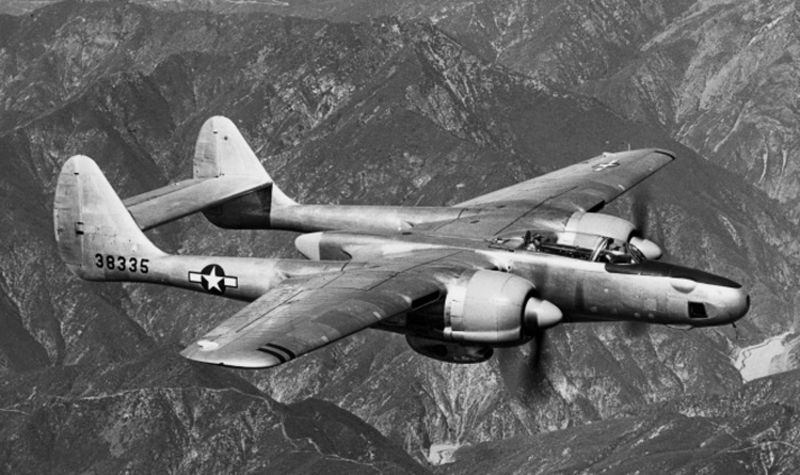
While many WWII aircraft were retired quickly at the end of the war, the Black Widow, as America’s only night fighter, soldiered on until the US could produce a jet-powered alternative, which came in the form of the Northrop F-89 Scorpion. In addition to their combat duties, P-61s also played a leading role in research into ejection seat technology, carried out tests on ramjet engines, and took part in the Thunderstorm Project, America’s first large-scale scientific study of thunderstorms. Northrop also developed a reconnaissance variant called the F-15 Reporter, which removed the top portion of the central gondola and housed the two-man crew under a single canopy. While the final flight of the P-61 was made in 1954, the Reporter served in various roles until 1968.
Short Takeoff
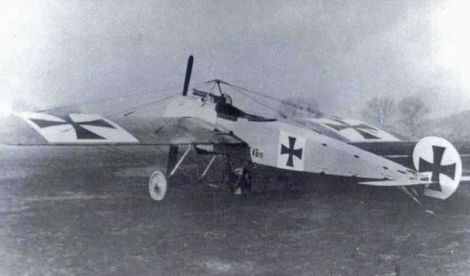
May 23, 1915 – The first flight of the Fokker Eindecker, the first in a series of monoplane (eindecker) fighters designed by Dutch aeronautical engineer Anthony Fokker and flown by the German Air Service in WWI. The Eindecker was based on the Fokker M.5, an earlier monoplane scout designed by Fokker that first flew in 1913 and was itself influenced by the Morane-Saulnier H monoplane. The major advance of the Eindecker was Fokker’s development of a synchronizing gear, also called an interrupter, that allowed the machine gun to be fired through the arc of the propeller and gave pilots significantly improved aim during dogfights. German pilots such as aces Max Immelmann and Oswald Boelcke enjoyed an advantage over Allied aircraft that were not similarly equipped, allowing the Germans to hold a measure of air superiority for the second half of 1915 until the Allies developed their own interrupter.
May 24, 1967 – The first flight of the Aero Spacelines Mini Guppy, an oversized cargo aircraft developed from the Boeing C-97 Stratofreighter. Two Mini Guppies were built using parts salvaged from the Stratofreighter, along with parts from the Boeing 377 Stratocruiser airliner. While the Mini Guppy retained the wings, engine and lower fuselage of the C-97/377, the upper fuselage was significantly enlarged by the addition of a second, oversized fuselage section, and the aircraft was loaded through a hinged tail section. The first Mini Guppy was retired in 1995, while the second was given upgraded Allison 501 turboprop engines and renamed the Mini Guppy Turbine. However, that aircraft was lost in a crash in 1970.
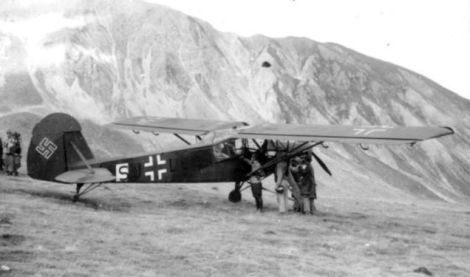
May 24, 1936 – The first flight of The Fieseler Storch Fi 156, a small transport aircraft developed for the German Aviation Ministry (Reichsluftfahrtministerium) for liaison, forward air control, and medevac duties. The Storch was selected over other contenders because of its outstanding short takeoff and landing (STOL) characteristics and other design elements such as folding wings that made the Storch easy to tow or transport. Long landing gear with shock absorbers allowed for operations from crude runways or unprepared fields. The Storch gained fame for its role in the rescue of ousted Italian Prime Minister Benito Mussolini from a rocky mountaintop ski resort in the Apennine Mountains during Operation Eiche (Oak) in 1943. Mussolini had been arrested and was being at the mountaintop hotel, but was rescued by German gliderborne paratroops and flown off the rock-strewn mountaintop by a Storch, the only aircraft capable of operating from the site.

May 24-25, 1991 – The Israeli military carries out Operation Solomon to airlift Ethiopian Jews to Israel. Operation Solomon was the third of three covert missions to rescue Ethiopian Jews from political instability in the east African country. With help from the American government and the American Association for Ethiopian Jews, military and civilian aircraft were assembled and flown to Addis Ababa where the refugees had gathered, often after harrowing trips bringing only what they could carry. To accommodate as many passengers as possible, the seats were removed from an El Al Boeing 747 and the stripped airliner managed to transport a record 1,112 refugees in a single flight, and pregnant refugees gave birth to five babies during the flight. At the end of the mission, a total of 14,325 Ethiopian Jews were brought to Israel.
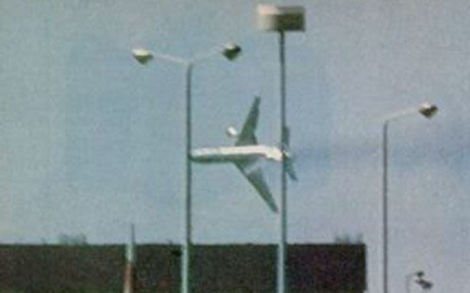
May 25, 1979 – The crash of American Airlines Flight 191, a regularly scheduled flight from Chicago O’Hare International Airport to Los Angeles International Airport. The wide body airliner crashed shortly after takeoff when the left engine of the McDonnell Douglas DC-10-10 (N110AA) separated from the wing, severing hydraulic lines, damaging the left wing’s leading edge, and causing an uncommanded retraction of the leading edge slats. As the aircraft continued to takeoff, the unbalanced configuration of the wing slats caused the left wing to stall while the right wing was still providing lift, and the aircraft rolled to the left until partially inverted before crashing in a nearby field. The crash killed all 271 passengers and crew as well as two people on the ground. It remains the deadliest aviation accident on US soil. The engine separation was found to have been caused by faulty maintenance practices performed by American Airlines, and not a design defect. As a result, American Airlines was fined $500,000 for improper maintenance procedures.
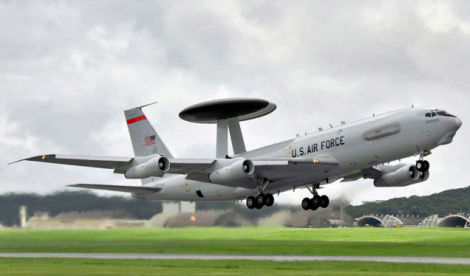
May 25, 1976 – The first flight of the Boeing E-3 Sentry, an airborne early warning and control (AEWC) aircraft more commonly known as AWACS that was developed to replace the Lockheed EC-121 Warning Star. The E-3 was derived from the civilian Boeing 707 airliner and uses its dorsal radome and other sensors to monitor the battlefield and the airspace around it. The Sentry then provides enhanced situational awareness to battlefield commanders, and helps control air and ground forces necessary for interdiction, reconnaissance, airlift, and close air support. The E-3 entered service with the US Air Force in 1977, and has since been adopted by NATO, the Royal Air Force and Saudi Arabia. Produced from 1977-1992, a total of 68 have been built and it remains operational.
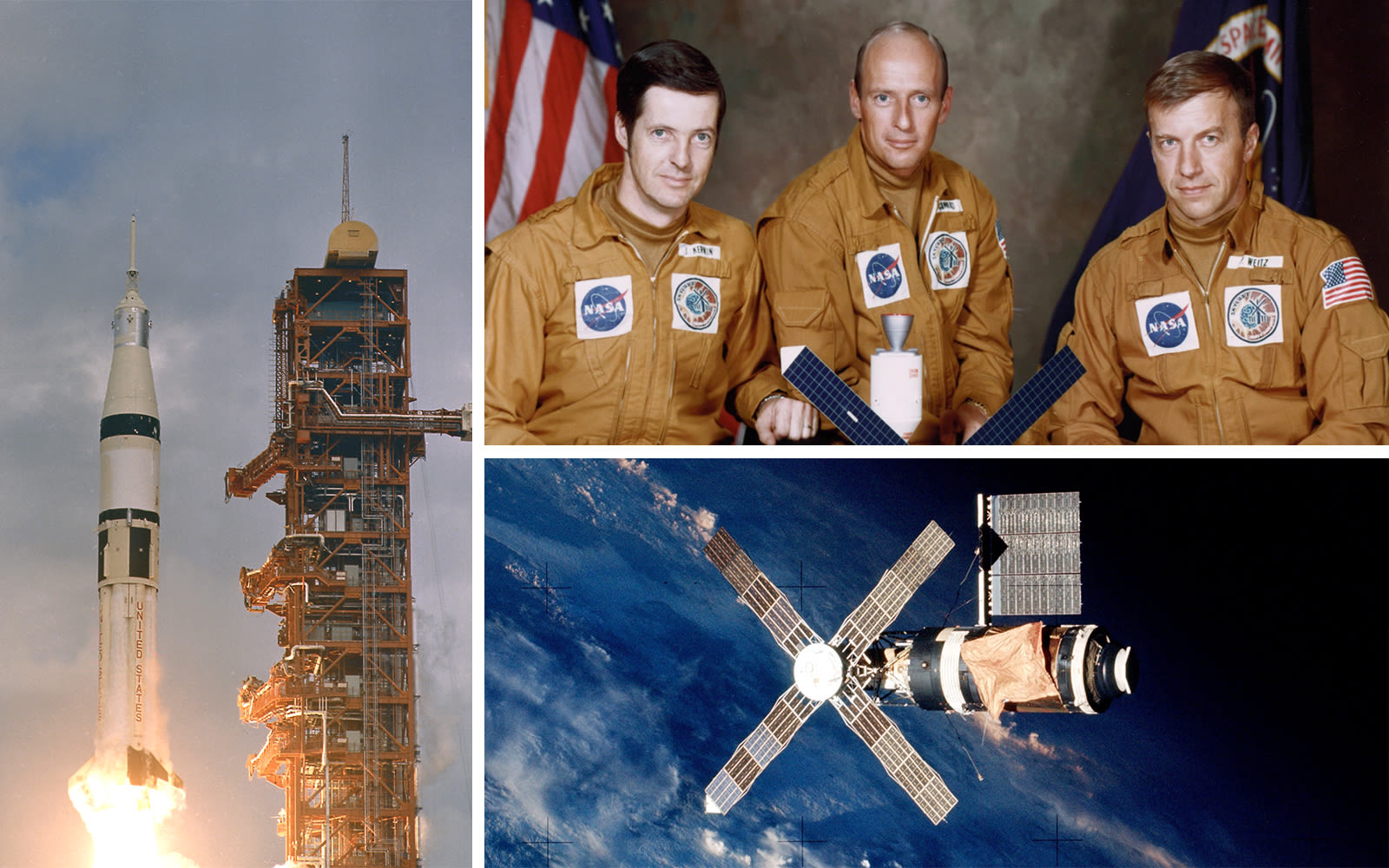
May 25, 1973 – The launch of Skylab 2, the first of three manned missions to Skylab, the United States’ first orbital space station. The Skylab space station was launched on May 14, 1973 (Skylab 1) and remained in orbit for six years. Skylab 2 astronauts Joseph Kerwin, Pete Conrad and Paul Weitz were launched into orbit atop a Saturn IB rocket and docked with the station on May 26. They remained onboard the station for 28 days and set a new record for spaceflight duration. The crew also set records for the greatest distance traveled and the greatest mass docked in space. A primary objective of the mission was to repair a jammed solar array on the station and to cover the station with a solar blanket that took the place of a heat shield damaged during launch. In addition to other repairs, the crew carried out 392 hours of experiments. The Skylab 2 Command Module returned to Earth on June 22, 1973 and was recovered by the carrier USS Ticonderoga (CV-14) near San Diego.

May 25, 1968 – The first flight of the Northrop Grumman EA-6B Prowler. Following the success of the two-man Grumman EA-6A electronic warfare aircraft over Vietnam, Grumman stretched the aircraft’s fuselage to add a second row of seating for electronics warfare officers, added an antenna fairing to the vertical stabilizer, and placed more powerful radars in the nose to produce the EA-6B. Introduced in 1971, Prowlers replaced the Douglas EKA-3B Skywarrior and flew 720 sorties in support of US Navy bombers and USAF Boeing B-52 Stratofortresses in Vietnam. The Prowler also served in Grenada, Afghanistan, Iraq and Syria, and was retired from US Navy service in 2015 and replaced by the newer Boeing EA-18G Growler. US Marine Corps Prowlers took part in bombing missions against the Syrian government in late 2018, and were retired in 2019.
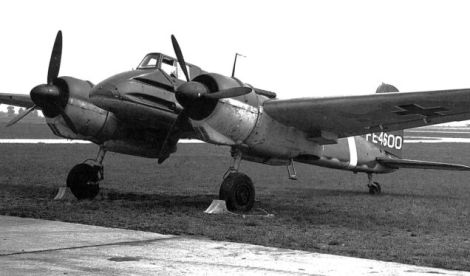
May 25, 1939 – The first flight of the Henschel 129, a twin-engine ground attack aircraft flown by the Luftwaffe during WWII. Based on experience of the German Condor Legion in the Spanish Civil War, the 129 was developed to provide heavy fire against lightly defended targets such as convoys or troop concentrations. Because of its role as a ground attack aircraft, the pilot sat inside a tub of steel sheeting and was protected by armored glass, while the engines were protected by armor plating. The 129 was powered by a pair of Gnome-Rhône radial engines because more powerful inline engines were in high demand elsewhere. Thus, the 129 was always underpowered, and when the two machine guns and two canons were replaced with a single 75mm antitank gun, the aircraft was virtually unflyable. Nevertheless, a total of 865 were produced from 1940-1944, and the 129 fought effectively in the early years of the war in North Africa and the Eastern Front.

May 25, 1937 – The first flight of the Gasuden Koken, a long-range research aircraft developed by the Tokyo Gas and Electric Industry (Gasuden) in an effort to break the world record for the longest closed circuit flight (taking off and landing from the same point). The plane was powered by a single Kawasaki V-12 engine that provided a top speed of 155 mph and had a wingspan of over 91 feet. The fuselage was constructed of metal, but the outer wings and control surfaces were covered in fabric. Following two unsuccessful attempts at the record, the Gasuden Koken took off from Kisarazu, Chiba on May 13, 1938 and made 29 laps of a 249-mile circuit. It landed two-and-a-half days later, having flown 7,239 miles, the only record ever set by Japan that was recognized by the Fédération Aéronautique Internationale. The record was broken just one year later by an Italian Savoia-Marchetti SM.82 which flew 8,038 mi.
May 25, 1937 – The first flight of the Sikorsky S-38, a twin-engined amphibious sesquiplane (a biplane in which one wing is significantly smaller than the other) that could accommodate eight passengers and the first widely-produced flying boat to be designed by Igor Sikorsky. Developed from the S-34 and S-36, both amphibious sesquiplanes that were built in very small numbers, the S-38 flew for Pan American Airways, the US Army (where it was known as the C-6), and the US Navy (where it was known as the PS-3). The S-38 was also popular with civilian pilots and safari companies in Africa. Sikorsky built a total of 101 S-38s.
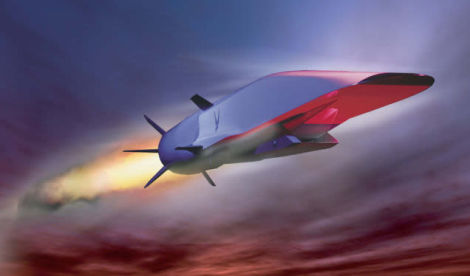
May 26, 2010 – The first flight of the Boeing X-51A WaveRider, an unmanned, hypersonic research aircraft that took its name from the compression lift created by its own shockwaves that it uses to generate lift. Powered by a scramjet engine, the X-51 is carried aloft by a Boeing B-52H mothership to an altitude of 50,000 feet, then released while attached to a solid rocket booster that propels the X-51 to a speed of Mach 4.5. The booster is then jettisoned and the aircraft flies under power from a Pratt & Whitney Rocketdyne scramjet engine. Following its maiden flight, and two flights flights with mixed results, the X-51 accelerated to Mach 5.1 on May 1, 2013 and flew for 210 seconds before running out of fuel and crashing into the Pacific Ocean. That flight set a record for the longest duration of flight at hypersonic speeds.
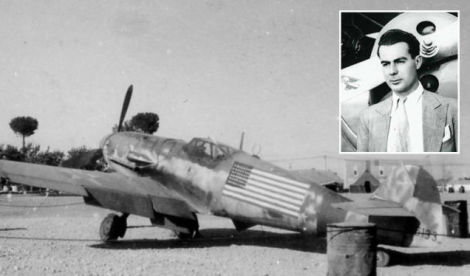
May 26, 1958 – The death of Constantin “Bazu” Cantacuzino, a Romanian pilot and one of the highest scoring Romanian aces of WWII. Before the outbreak of WWII, Cantacuzino was an aerobatic pilot and chief pilot for the Romanian state airline LARES. With the start of the war, Romania sided with the Axis powers, and Cantacuzino fought both Soviet and Allied aircraft and claimed one of six B-24 Liberators shot down during a bombing mission. But as the Axis powers began to falter near the close of the war, Romania switched allegiance to the Allied side, and Cantacuzino began to fight his former German allies, downing three Heinkel He 111s attacking Bucharest. But his most spectacular mission came when he was tasked with transporting the highest-ranking American POW in Romania, Lieutenant Colonel James Gunn III, to Italy. Flying a Messerschmitt Bf-109 emblazoned with an American flag, Cantacuzino landed in Italy to lead a flight of 56 Boeing B-17s to return to Romania to repatriate the American POWs. When his Messerschmitt could not be refueled, he was given a North American P-51 Mustang, which he mastered after only a single flight. Cantacuzino ended the war with 43 victories, and returned to work with LARES. However, all of his lands were confiscated by the Communist government, and he eventually escaped to Italy in 1947.
Connecting Flights
If you enjoy these Aviation History posts, please let me know in the comments. You can find more posts about aviation history, aviators, and aviation oddities at Wingspan.
